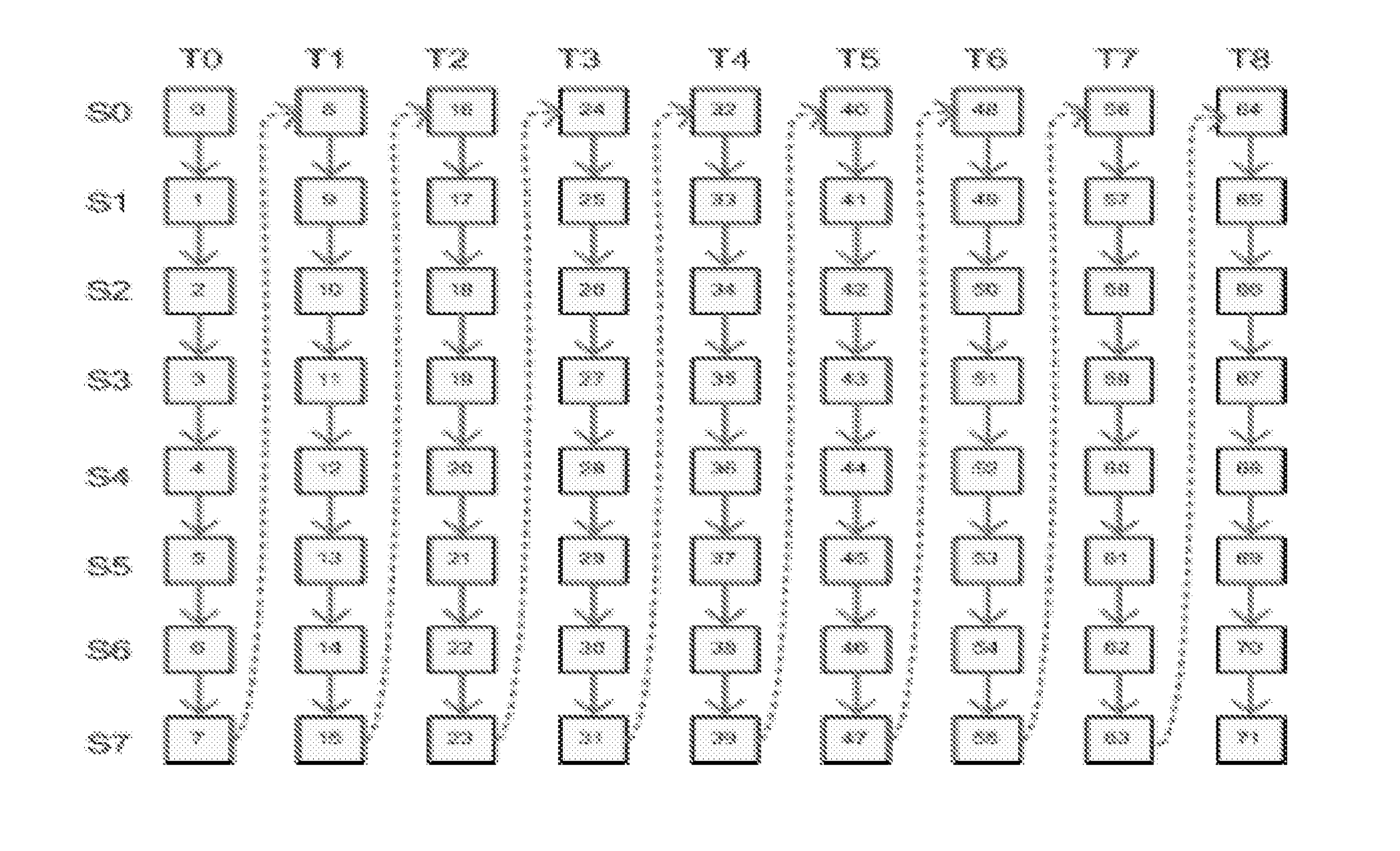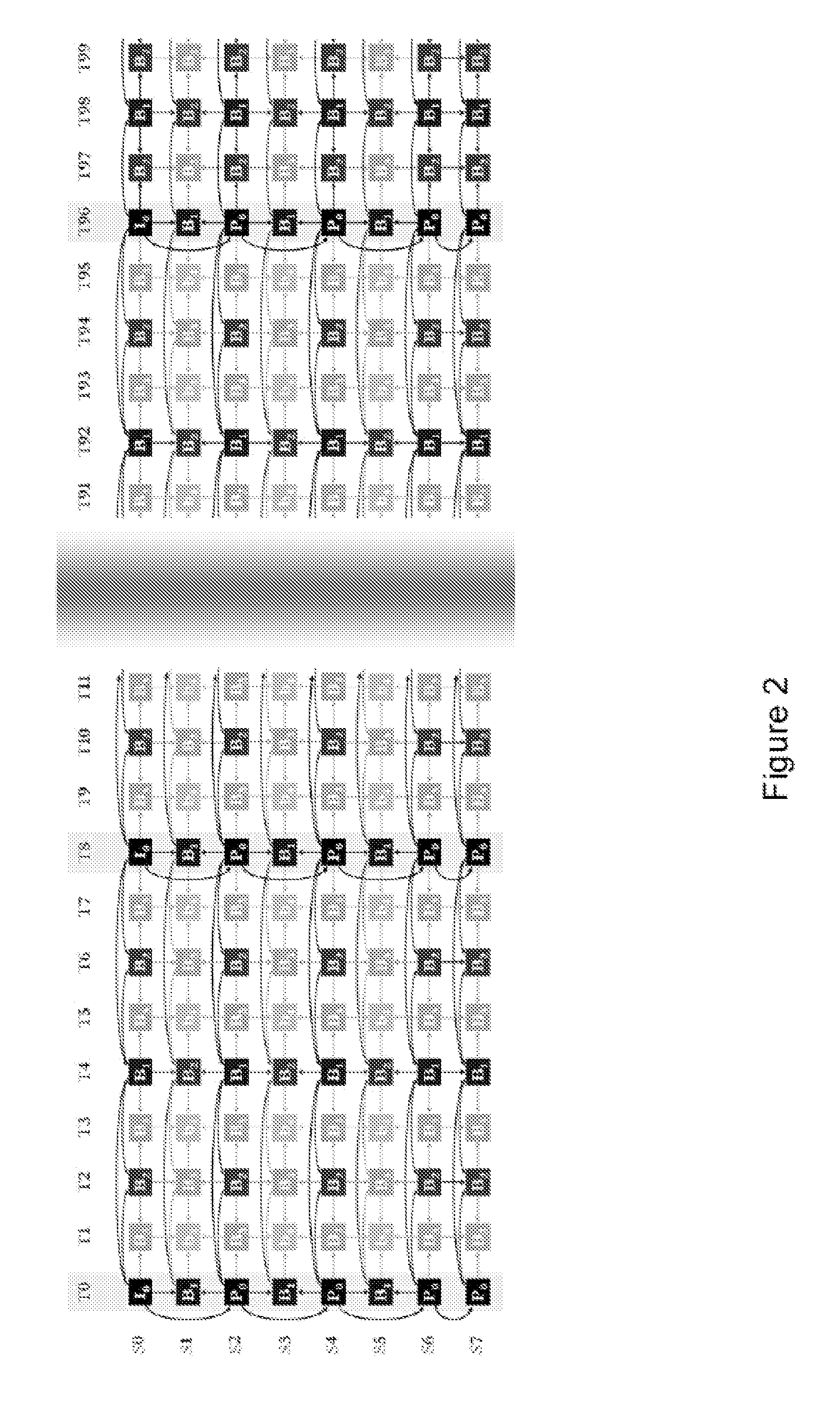Sharing of motion vector in 3D video coding
a motion vector and video coding technology, applied in the field of video coding threedimensional (3d) video content, can solve the problems of inefficient sample prediction between depth map and texture, bandwidth constraint becomes an issue, and the effect of almost useless sample prediction
- Summary
- Abstract
- Description
- Claims
- Application Information
AI Technical Summary
Benefits of technology
Problems solved by technology
Method used
Image
Examples
first embodiment
[0050]Thus, for multiple-view bitstreams, a MVC-compliant depth coding scenario is contemplated. When multiple views exist, each of which is with a depth map video and a texture video, MVC-compliant depth coding can be applied to enable inter-view prediction between depth map videos and inter-view prediction between texture videos. One manner of coding the multiview content is in an MVC-compliant manner. In accordance with a first embodiment, all of the depth map images are coded as auxiliary pictures while enabling inter-view prediction (indicated by the arrows) between auxiliary pictures in different views, as shown in FIG. 5a. For example, FIG. 5a illustrates that a depth map video from view 1 can utilize depth map videos from views 0 and 2 as prediction references.
second embodiment
[0051]In accordance with a second embodiment, all of the depth map images are coded as normal 4:0:0 views while each of the depth map videos is assigned a new view identifier. For example and as shown in FIG. 5b, considering a scenario with three views, the texture videos are coded as views 0 to 2, and the depth map videos are coded as views N, N+1 and N+2. Inter-view motion prediction between depth map video and texture video in each view is applied in this embodiment. It should be noted that motion skip applied in JMVM (indicated by the diagonal arrows between each of the depth map and texture videos) do not take effect in this embodiment. The remaining arrows illustrated in FIG. 5b are again indicative of inter-view prediction. In this case, an SEI message is introduced to enable a renderer to map the view identifier of the depth map to its associated texture video. In FIG. 5b, the inter-view motion prediction is from depth map video to texture video, alternatively, inter-view mo...
PUM
 Login to View More
Login to View More Abstract
Description
Claims
Application Information
 Login to View More
Login to View More - R&D
- Intellectual Property
- Life Sciences
- Materials
- Tech Scout
- Unparalleled Data Quality
- Higher Quality Content
- 60% Fewer Hallucinations
Browse by: Latest US Patents, China's latest patents, Technical Efficacy Thesaurus, Application Domain, Technology Topic, Popular Technical Reports.
© 2025 PatSnap. All rights reserved.Legal|Privacy policy|Modern Slavery Act Transparency Statement|Sitemap|About US| Contact US: help@patsnap.com



